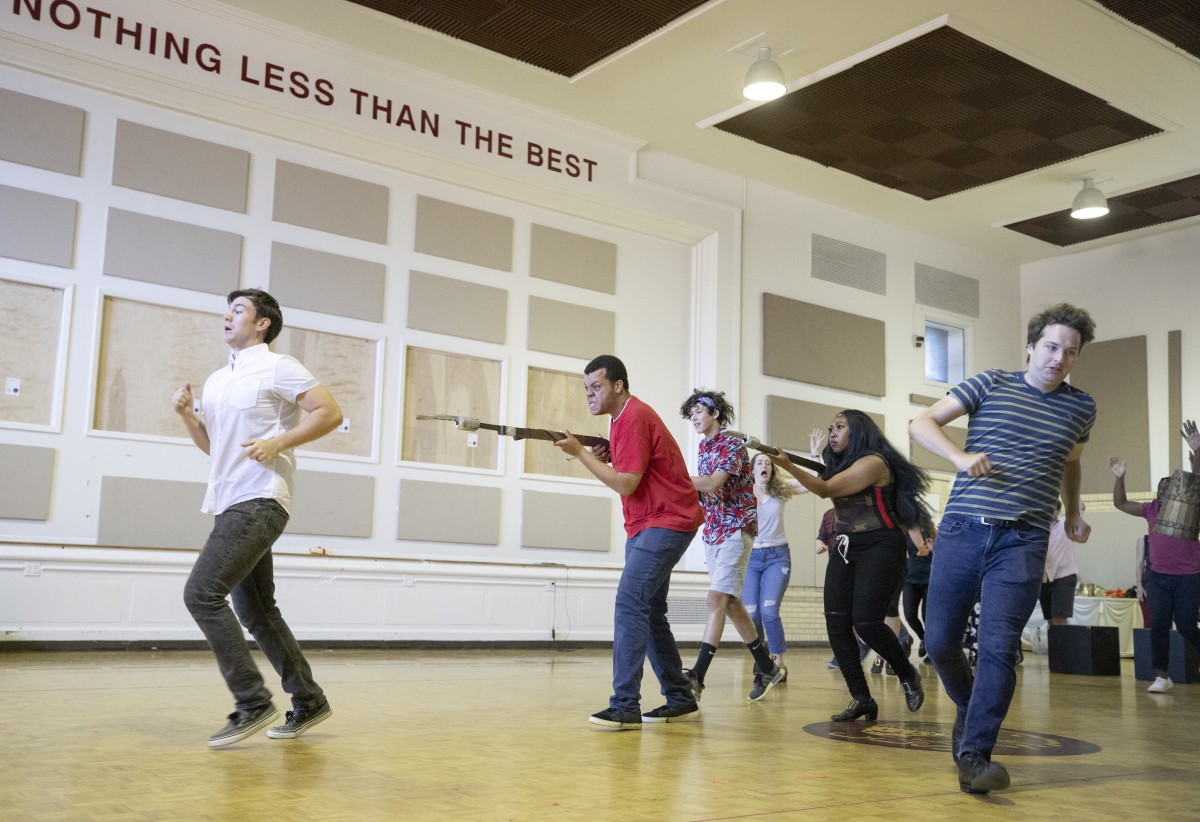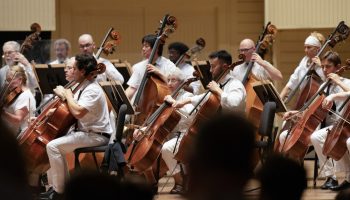
Leonard Bernstein’s Candide premiered Dec. 1, 1956, on Broadway. It was marketed as a musical, but since then, opera companies have adopted it as an operetta.
Bernstein was known for blurring the lines between opera and musical theater, and Candide is an example of this fusion.
Chautauqua Opera Company will perform Candide at 4 p.m. Friday, July 27, and 7:30 p.m. Monday, July 30, in Norton Hall. The music begs to be sung like Puccini or Verdi, Young Artist John Riesen said, but the lyrics inform the story, as in musical theater. Combining the similar ways of producing live theater makes the work more accessible to audiences, and shows that opera and musical theater aren’t all that different.
The musical numbers in Candide are where most of the story is told, so the Chautauqua Opera Young Artists focused on the lyrics and diction, according to dance choreographer Mara Newbery Greer.
“Yes, you have the lines and stuff, but in the music is where we’re furthering the story and furthering the plot, and if you miss those things, you’re not going to know what’s happening in the story,” Greer said. “This show is really kind of a crossover. Opera theaters do it. Musical theater companies do it. Which makes it kind of an anomaly; it makes it pretty cool.”
Bernstein’s work capitalizes on the fact that opera and musical theater used to be the same genre of live theater, said Riesen, who will assume the role of Candide. Operas feature singers who are unamplified, whereas singers in musical theater are usually mic’d up. When microphones became easily accessible in the industries, the divide between the two became more pronounced.
“Only in modern day have (musical theater and opera) split and become two separate entities. I find that to be a problem,” Riesen said. “I wish we could go back 60 or 70 years and have whichever people were so against the progress to stay on the same path, then the audiences nowadays would still be one community.”
Guest artist Robert Orth, who plays Pangloss, Voltaire and the Narrator in the upcoming production, got his start in musical theater and has appeared in more than 100 opera roles.
“Opera has definitely made me a much better singer and a much better artist, if I may call myself that,” Orth said. “And in some ways, a better person, because you’re always striving for something that is so much higher and better than you are.”
Orth has enjoyed performing new-age American operas because they include aspects of musical theater, like Bernstein’s work. Some of the tunes in Candide have the elevated feel found in European operas, but the score also takes a jazzier tone, Orth said.
Developing choreography for an opera is different than for musical theater, Greer said. There aren’t many dance breaks in opera, and the dancing often happens while the performers are singing. The singers aren’t mic’d up, so Greer has to find movements that support the sound.
Candide has more movement than most operas because of the musical theater crossover, Greer said.
“As great as this music is, some of these numbers, if we just stood and sang, they have kind of a driving force that makes you want to have some movement, even if it’s minimal,” Greer said. “You have to try to include some of that just because that’s what the music dictates.”
Bernstein incorporated American culture and music into his score, said Young Artist Rebekah Howell, who will portray Cunegonde. The singing in Candide is important, but making sure the text comes through and the audience can understand what’s happening is also essential, Howell said.
“Some people said Bernstein doesn’t know how to write for an opera house, but I think his style, in that it resonates so much with the American spirit and American sensibilities in music, is exactly why we need it in an opera house,” Howell said. “It’s very accessible to audiences, and it’s something you can listen to right away and really grab a hold of. It speaks directly to you.”
Some people are quick to dismiss opera as an inaccessible art form, Riesen said. When someone watches one or two operas and they don’t like them, they automatically think they won’t like every performance. That shouldn’t be the case, Reisen said.
That argument doesn’t apply to movies, Riesen said. Similar to seeing a bad movie, a person might not like an opera for many reasons, including the genre, cast or director.
Stereotypes in pop culture have also turned people away from opera, Howell said, as some people still consider a performer in horns and braids as the quintessential opera “caricature.”
“If you want a really enriching experience when you go to any kind of theater, … you have to lay aside your preconceived notions and be ready to take something in fresh with fresh ears, fresh eyes, and no judgment before you see the work,” Howell said.
Composers like Bernstein go back to the roots of opera, when both acting and singing were important to the art form.
“It’s no longer in the age of stand and sing,” Riesen said. “It’s going back to what it was: live theater.”




